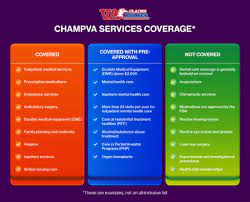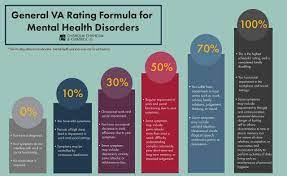Secondary VA Claims: Understanding and Navigating the Process
For veterans who have already received a service-connected disability rating from the Department of Veterans Affairs (VA), there may be instances where additional health conditions arise as a result of their service-connected disability. In such cases, veterans can file secondary VA claims to seek compensation for these new conditions that are related to their existing service-connected disability. Understanding the process and requirements for secondary VA claims is crucial for veterans seeking the benefits they deserve.
A secondary condition is defined as a medical issue that develops or worsens due to an existing service-connected disability. For example, if a veteran has a service-connected knee injury that causes them to walk with an altered gait, it could lead to chronic back pain over time. In this scenario, the chronic back pain would be considered a secondary condition resulting from the primary service-connected knee injury.
To file a secondary VA claim, veterans must establish a nexus or link between their existing service-connected disability and the new condition. This nexus can be established through medical evidence such as doctor’s opinions, medical records, or expert testimony. It is essential to provide strong evidence demonstrating how the primary disability directly caused or aggravated the secondary condition.
When filing a secondary VA claim, veterans should gather all relevant medical records and documentation supporting their case. This includes medical opinions from healthcare professionals who can provide expert insight into the causal relationship between the primary and secondary conditions. It is crucial to ensure that all necessary paperwork is complete and accurate before submitting the claim.
The VA will evaluate each secondary claim on its individual merits and determine whether it meets the criteria for compensation. It is important to note that establishing direct service-connection for a secondary condition can sometimes be challenging, as it requires demonstrating a clear cause-and-effect relationship between the primary and secondary conditions.
To increase their chances of success with secondary VA claims, veterans may consider seeking assistance from accredited Veteran Service Organizations (VSOs) or hiring a qualified attorney who specializes in VA disability claims. These professionals can provide guidance, review the evidence, and help veterans navigate the complex process of filing a secondary claim.
It is crucial for veterans to be proactive when it comes to their healthcare and benefits. Regularly monitoring their service-connected disabilities and seeking medical attention for any new conditions that may arise is essential. By promptly addressing these issues and filing secondary VA claims when necessary, veterans can ensure they receive the compensation they are entitled to for their service-related disabilities.
In conclusion, secondary VA claims provide a pathway for veterans to seek compensation for new conditions that arise as a result of their existing service-connected disabilities. Understanding the process, gathering strong evidence, and establishing a clear nexus between the primary and secondary conditions are key factors in successfully navigating this complex system. By staying informed and seeking assistance when needed, veterans can maximize their chances of receiving the benefits they deserve.
6 Essential Tips for Filing Secondary VA Claims
- Make sure to submit your secondary claim as soon as possible after submitting your primary claim, as it can take several months for the VA to process a secondary claim.
- Include all relevant medical records and documentation when filing a secondary claim so that the VA has all of the necessary information to make an accurate decision.
- Read up on the latest VA regulations and policies related to secondary claims, as these are constantly changing and you want to make sure you are following them correctly.
- Make sure to include any applicable service-connected disabilities from your primary claim in your secondary claim, if they are applicable, as this could affect the outcome of your case.
- Contact a Veterans Service Officer or other accredited representative if you have questions or need assistance with filing a secondary claim or appealing an unfavorable decision by the VA on such a claim
- Monitor progress on your secondary claims regularly by contacting the VA directly or checking their website for updates on its status
Make sure to submit your secondary claim as soon as possible after submitting your primary claim, as it can take several months for the VA to process a secondary claim.
Timeliness is Key: Submitting Your Secondary VA Claim Promptly
When it comes to filing a secondary VA claim, one crucial tip to keep in mind is the importance of submitting your claim as soon as possible after filing your primary claim. The reason behind this is simple: the processing time for secondary claims can often be lengthy, sometimes taking several months for the VA to review and make a decision.
By submitting your secondary claim promptly, you can help expedite the overall process and potentially receive a decision on both claims more efficiently. This is especially important if you are in need of compensation for a new condition that has arisen due to your existing service-connected disability.
The VA has its own set of procedures and protocols for evaluating secondary claims, which can contribute to the longer processing times. It involves assessing medical evidence, establishing a nexus between the primary and secondary conditions, and determining the appropriate level of compensation.
To avoid unnecessary delays, it is essential to gather all relevant medical records and supporting documentation before submitting your secondary claim. This includes obtaining medical opinions from qualified professionals who can provide expert insight into the causal relationship between your primary and secondary conditions.
By being proactive and submitting your secondary claim promptly, you give yourself the best chance of receiving timely compensation for your service-related disabilities. It also allows you to address any new health issues that may have arisen due to your service-connected disability without undue delay.
If you have already filed a primary claim with the VA and believe you may be eligible for compensation for a secondary condition, don’t wait. Take action as soon as possible by submitting your secondary claim promptly. Remember that time is of the essence when it comes to receiving the benefits you deserve.
In conclusion, making sure to submit your secondary claim as soon as possible after filing your primary claim is an important tip to remember when navigating the VA system. By doing so, you can help minimize processing times and increase your chances of receiving timely compensation for any new conditions related to your service-connected disability. Stay proactive, gather the necessary evidence, and take prompt action to ensure you receive the benefits you are entitled to.
Include all relevant medical records and documentation when filing a secondary claim so that the VA has all of the necessary information to make an accurate decision.
Maximizing Your Chances: The Importance of Including Relevant Medical Records in Secondary VA Claims
When filing a secondary VA claim, one vital tip can significantly increase your chances of success: include all relevant medical records and documentation. Providing the VA with comprehensive and accurate information about your condition is crucial for them to make an informed and fair decision regarding your claim.
Including all relevant medical records ensures that the VA has a complete understanding of your case. These records provide valuable evidence that supports the link between your existing service-connected disability and the new condition you are claiming. By submitting thorough documentation, you help establish a clear nexus between the primary and secondary conditions, strengthening your case for compensation.
When gathering medical records, it is essential to include any documents that directly relate to your secondary condition. This includes doctor’s opinions, test results, treatment plans, progress notes, and any other relevant information that demonstrates the connection between your service-connected disability and the new condition.
By providing a comprehensive overview of your medical history, you give the VA a holistic view of how your primary disability has impacted your overall health. This allows them to assess the severity and impact of the secondary condition accurately. Leaving out crucial medical records may result in an incomplete evaluation by the VA, potentially affecting their decision on whether to grant compensation.
It is also important to ensure that all documentation is accurate and up-to-date. Double-checking that names, dates, and other pertinent details are correct can help avoid any confusion or delays in processing your claim. If you have any concerns about missing or incomplete records, consider reaching out to healthcare providers or specialists who have treated you for both conditions. They may be able to provide additional documentation or clarification if needed.
Remember, filing a secondary VA claim can be a complex process. Including all relevant medical records is just one piece of the puzzle. Seeking assistance from accredited Veteran Service Organizations (VSOs) or legal professionals who specialize in VA disability claims can provide further guidance and support throughout the filing process.
In conclusion, including all relevant medical records and documentation is crucial when filing a secondary VA claim. By providing a comprehensive overview of your medical history, you give the VA the necessary information to make an accurate decision regarding your compensation. Take the time to gather all pertinent records and ensure their accuracy before submitting your claim. By doing so, you increase your chances of receiving the benefits you deserve for your service-connected disabilities.
Read up on the latest VA regulations and policies related to secondary claims, as these are constantly changing and you want to make sure you are following them correctly.
Staying Updated: The Key to Success with Secondary VA Claims
When it comes to filing secondary VA claims, knowledge is power. One crucial tip for veterans seeking compensation for new conditions related to their existing service-connected disabilities is to stay informed about the latest VA regulations and policies regarding secondary claims. By keeping up-to-date with these changes, veterans can ensure they are following the correct procedures and maximizing their chances of success.
The VA’s regulations and policies regarding secondary claims are not set in stone; they evolve over time as new information and research become available. It is essential for veterans to understand that what may have been applicable in the past may not hold true today. Therefore, taking the time to read up on the latest updates is vital.
By regularly reviewing the updated regulations and policies, veterans can stay informed about any changes that may impact their secondary claim. This includes understanding the specific criteria for establishing a nexus between their primary and secondary conditions, as well as any additional evidence requirements or documentation needed.
Reading up on the latest VA regulations and policies also helps veterans avoid common mistakes or misconceptions that could potentially harm their claim. It ensures that they have accurate information at hand when gathering evidence, seeking medical opinions, or completing necessary paperwork.
To access the most recent information, veterans can visit official VA websites or consult resources provided by accredited Veteran Service Organizations (VSOs). These sources often provide updates on policy changes, guidelines for filing secondary claims, and other valuable information related to VA benefits.
Additionally, veterans should consider reaching out to knowledgeable professionals who specialize in VA disability claims. These experts can provide guidance based on their understanding of current regulations and policies. They can help clarify any confusion and ensure that veterans are following the correct procedures throughout the process.
In conclusion, staying updated on the latest VA regulations and policies related to secondary claims is crucial for veterans seeking compensation for new conditions arising from existing service-connected disabilities. By being aware of any changes, veterans can ensure they are following the correct procedures and providing the necessary evidence to support their claims. Remember, knowledge is power, and staying informed increases the chances of a successful outcome in navigating the complex world of secondary VA claims.
Make sure to include any applicable service-connected disabilities from your primary claim in your secondary claim, if they are applicable, as this could affect the outcome of your case.
Maximizing the Success of Your Secondary VA Claim: Including Applicable Service-Connected Disabilities
When filing a secondary VA claim, it is crucial to ensure that you include any applicable service-connected disabilities from your primary claim. This simple step can significantly impact the outcome of your case and increase your chances of receiving the compensation you deserve.
A secondary VA claim is filed when a new medical condition arises as a result of an existing service-connected disability. For example, if you have a service-connected knee injury that affects your mobility and subsequently develops arthritis in your hip joint, it is important to include both the knee injury and the hip arthritis in your secondary claim.
By including all relevant service-connected disabilities in your secondary claim, you are providing a comprehensive picture of how these conditions are interconnected. This strengthens the evidence supporting your case and establishes a clear nexus between the primary and secondary conditions.
The VA evaluates each disability individually but takes into account how they may interact with one another. Including applicable service-connected disabilities from your primary claim in your secondary claim helps demonstrate the progression or exacerbation of your overall health condition due to military service.
To ensure accuracy and completeness, carefully review your primary claim’s decision letter or rating decision to identify any relevant service-connected disabilities that may be applicable to your secondary claim. Gather all relevant medical records, doctor’s opinions, or expert testimony that supports the connection between these conditions.
It is important to note that not all service-connected disabilities will be applicable to every secondary claim. The key is to include those that have a direct impact on or contribute to the development or worsening of the new condition.
By including applicable service-connected disabilities from your primary claim in your secondary claim, you provide a compelling case for compensation. This proactive approach can significantly improve the likelihood of a favorable outcome.
Remember, seeking assistance from accredited Veteran Service Organizations (VSOs) or experienced attorneys who specialize in VA disability claims can further enhance your chances of success. These professionals can provide guidance, review your evidence, and ensure that all necessary information is included in your secondary claim.
In conclusion, when filing a secondary VA claim, it is essential to include any applicable service-connected disabilities from your primary claim. This simple yet crucial step strengthens the evidence supporting your case and increases the likelihood of receiving the compensation you deserve. Take a proactive approach, gather all relevant documentation, and seek assistance if needed to maximize the success of your secondary claim.
Contact a Veterans Service Officer or other accredited representative if you have questions or need assistance with filing a secondary claim or appealing an unfavorable decision by the VA on such a claim
Seeking Assistance with Secondary VA Claims: Contact a Veterans Service Officer for Guidance
Navigating the process of filing a secondary VA claim or appealing an unfavorable decision by the Department of Veterans Affairs (VA) can be complex and overwhelming. In such situations, it is highly recommended to seek assistance from a Veterans Service Officer (VSO) or another accredited representative. These professionals are well-versed in VA procedures and can provide valuable guidance and support throughout the process.
A VSO is an individual who has received accreditation from the VA to assist veterans with their claims and appeals. They are typically associated with recognized Veteran Service Organizations (VSOs), such as the American Legion, Disabled American Veterans (DAV), or Veterans of Foreign Wars (VFW). These organizations have trained VSOs who specialize in helping veterans navigate the intricacies of the VA system.
When dealing with secondary VA claims, contacting a VSO or accredited representative can be immensely beneficial. They possess in-depth knowledge of VA regulations and requirements, ensuring that your claim is properly prepared and supported by strong evidence. They can guide you through gathering relevant documentation, obtaining medical opinions, and completing necessary paperwork accurately.
Furthermore, if you receive an unfavorable decision from the VA regarding your secondary claim, a VSO or accredited representative can assist you in appealing that decision. They will help you understand why your claim was denied and work with you to gather additional evidence or address any deficiencies in your initial submission. Their expertise in navigating the appeals process can significantly increase your chances of success.
By reaching out to a VSO or accredited representative, veterans gain access to invaluable support during what can often be a frustrating and lengthy journey. These professionals are dedicated to serving veterans’ best interests and ensuring they receive the benefits they deserve for their service-related disabilities.
To find a VSO or accredited representative near you, visit the official website of recognized Veteran Service Organizations or contact your local VA office for recommendations. They will be able to connect you with a knowledgeable professional who can provide the assistance and guidance you need.
In conclusion, if you have questions or need assistance with filing a secondary VA claim or appealing an unfavorable decision, it is highly recommended to contact a Veterans Service Officer or another accredited representative. Their expertise and understanding of the VA system can greatly enhance your chances of success. Remember, you are not alone in this process – there are dedicated professionals ready to support and advocate for you every step of the way.
Monitor progress on your secondary claims regularly by contacting the VA directly or checking their website for updates on its status
Monitoring the Progress of Your Secondary VA Claims: Stay Informed and Empowered
When it comes to filing secondary VA claims, it’s crucial for veterans to stay informed and be proactive in monitoring the progress of their claims. One valuable tip to ensure you’re up-to-date with your claim’s status is to regularly contact the Department of Veterans Affairs (VA) directly or check their website for updates.
By reaching out to the VA or utilizing their online resources, you can gain valuable insights into the progress of your secondary claim. This proactive approach allows you to stay informed about any developments, changes, or additional information required for your claim. It also provides an opportunity to address any potential issues promptly.
Contacting the VA directly enables you to speak with a representative who can provide personalized assistance and answer specific questions related to your claim. They can inform you about any missing documents or additional evidence needed, ensuring that your claim progresses smoothly through the system.
Additionally, regularly checking the VA’s website for updates on your claim’s status is a convenient way to monitor its progress. The VA often provides online portals where veterans can access personalized information about their claims. These portals may include details about the current stage of review, any pending actions required from your end, or estimated timelines for decision-making.
By actively engaging with the VA and staying informed about your secondary claim’s status, you empower yourself throughout the process. It allows you to take necessary actions promptly and provide any requested documentation in a timely manner, minimizing delays in receiving a decision on your claim.
Remember that patience is key when dealing with secondary VA claims as they can sometimes take time due to their complexity. However, by staying vigilant and regularly monitoring progress through direct contact or online resources provided by the VA, you are taking an active role in advocating for yourself and ensuring that your claim receives proper attention.
In conclusion, monitoring the progress of your secondary VA claims is essential for staying informed and empowered throughout the process. By reaching out to the VA directly or checking their website for updates, you can proactively address any issues, provide necessary documentation, and ensure that your claim moves forward smoothly. Stay engaged, stay informed, and stay empowered on your journey to securing the benefits you deserve.




